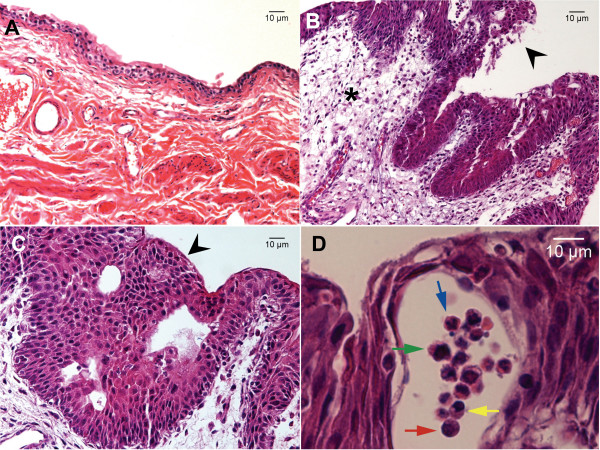Figure 1.
Summary of the bladder lesions found in F344 rats experimentally infected with U. parvum. Panel A is a 200× magnification of bladder tissue from a Control rat. This sample represents a lesion score of 0 for degree of inflammation, degree of epithelial change and inflammatory cell type. Panels B, C, and D are tissue sections from animals inoculated with U. parvum that had a lesion score of 3 for degree of inflammation, degree of epithelial change and inflammatory cell type. Panel B is a 200× magnification of bladder tissue from an animal within the struvite group. The asterisk demarcates the extensive edema and fibrinous exudate infiltrating the submucosa. The black arrow points to uroepithelial effacement. Panel C is a 400× magnification of extensive uroepithelial hyperplasia. Panel D is a magnified inset of Panel B that highlights the array of white blood cells that comprised in the inflammatory cellular infiltrate in the tissues of infected animals. The blue arrow is pointing to a neutrophil. The green arrow is pointing to a tissue macrophage. The yellow arrow is pointing to a plasma cell. The red arrow is pointing to a lymphocyte.

